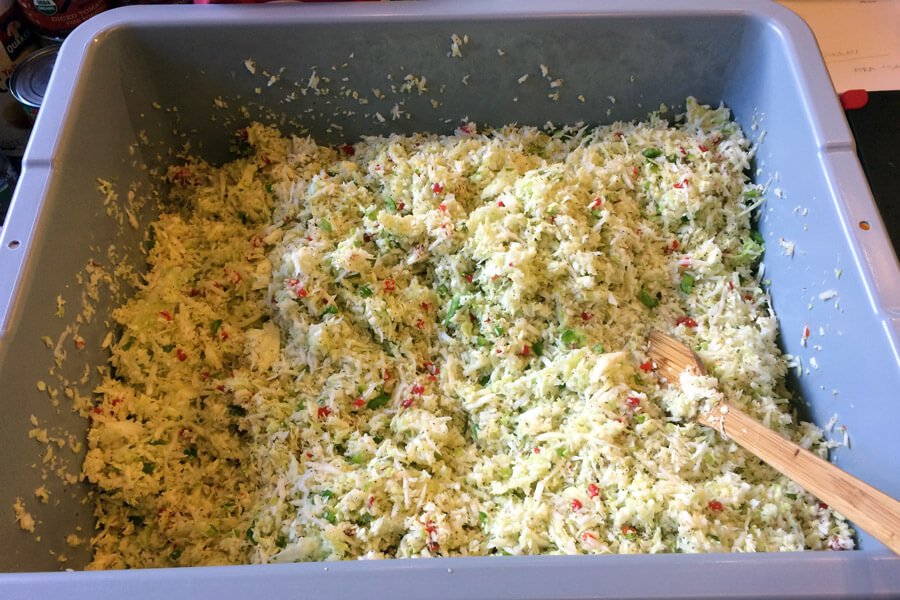(From Clutch MOV // by Rebecca Rhodes)
Clear the clutter, arrange the pillows, comb the children’s hair and most importantly, have dinner ready. This is just a small list detailing the ways a wife should act and be the best partner and mother. Of course, this is according to a 1955 publication of Housekeeping Monthly. However, according to the Castle of Marietta, the 1950s era of petticoat skirts and rabbit ridges had huge effects on the local history.
During the Nifty 50s in Norwood event, an installment of the Castle’s food history series, old recipes shed light on Marietta’s past. Guests tasted some culinary classics from Norwood Methodist Church’s 1959 cookbook “Favorite Recipes.” This included dishes like Lola Horner’s Sour Milk Corn Bread, Bertha Jacoby’s Johnny Marzettie and her Lemon Sponge Pie.
This was a hard menu to come up with considering 46 percent of the cookbook features main courses and an upwards of 50 percent is desserts and jams.
“It is amazing to talk about the history of where a cookbook comes from, which in this instance, is Norwood. So, we get to learn about Norwood. Then, we also learn about the food processes and how those have changed compared to today. Last, we get to learn about the individuals that provided the recipes and the business that advertised and sponsored the cookbooks. It all gives an enlightening sketch to the community,”
- The Castle of Marietta Education Director Kyle Yoho
One enlightening sketch is what could be considered an industrial development period for the town. Because plants like the Shell Chemical Company started coming in due to the transportation hubs of the railroad, river and I-77, Marietta became a tourist destination. Therefore, it became a booming town, and the population raised 18 percent.
Another startling percentage is how many Americans smoked in the 1950s. Almost half the population lit up, and burnt their taste buds in doing so.
“When testing the menu, I realized how super salty the food was, and asked ‘why is it so salty?’ Everybody in the 50s smoked; one in every two doctors smoked. Another horrific event is the combination of foods. Those that were starting into cooking like Julia Child were using foods that hadn’t been available. You ended up with dishes like lobster and hotdogs,” Cook Shop, LLC owner Dagmar Kupsche said.
She did extensive research on the 1950s and found that it marks the beginning of cuisine. People of this time were coming off war rations and found no limitation on ingredients to cook with. However, their pallets were not developed (hence the strange combinations).
“The 50s were known for the simplicities and ease of cooking since everything was now readily available at stores and markets. Even though the women were fancily dressed, wore their pearls and met their man at the door with a martini in hand, the food was simple,” Dagmar said.
Another food history event is set for September. The Castle and the Cook Shop will look at President Howard Taft’s 1910 visit to Marietta to celebrate the college’s 75th anniversary. After giving a speech at Muskingham Park, Taft went to the Mills home (the college president’s house) and had lunch. There is no written description of what Taft had, so it leaves creative room for Dagmar in drafting a menu.
“The best part of planning this event and future events is working to form more partnerships in the community. Many heritage organizations tend to go out and do things on their own, but with Marietta being a smaller town, it is exciting to develop these relationships and collaborate our different talents,” Kyle said.

















